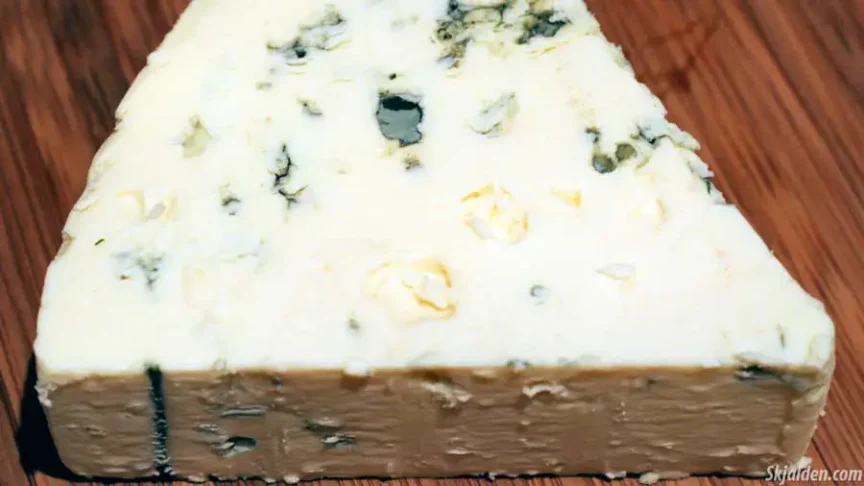Danish Blue Cheese, also known as Danablu, has captivated people with its creamy texture and sharp and savory flavor. It has made a significant mark, not just in Denmark but globally, enhancing a variety of dishes with its unique flavor.
The Danish cheesemaker Marius Boel made the first Danish Blue Cheese in 1927 to offer a local version of French Roquefort. This cheese, made from cow’s milk, is famous for its unique mold. During production, cheesemakers actively pierce the cheese to let oxygen help the mold cultures develop. This step is crucial for forming the blue veins and achieving the sharp, slightly salty taste that makes Danish Blue Cheese stand out.
European laws strictly protect the Danablu designation, ensuring it only covers cheese produced under stringent conditions in Denmark. This legal protection ensures the preservation of the traditional craftsmanship and quality that Danish Blue Cheese is known for.
Cooking with Danish Blue Cheese
The sharp and savory flavor of Danish Blue Cheese makes it versatile for cooking and pairing. It goes well with crusty bread and cuts through the sweetness of fruits like pears and figs with its intense saltiness. Danish chefs often use it to enhance salads or blend it into sauces for a richer flavor.
Castello Blue Cheese is a great option for those preferring a softer taste. While maintaining the creamy texture and visible blue veins, it offers a milder flavor, ideal for newcomers to blue cheeses.
When picking the best Danish Blue Cheese, choose pieces that are moist and show evenly distributed blue veins. These traits signal a well-made cheese that will provide the strong flavor Danablu is celebrated for.
Danablu is more than a culinary ingredient; it represents a piece of Danish culinary heritage that people cherish on cheese boards and in kitchens across the globe. Whether added to a dish or enjoyed solo, the Cheese delivers a genuine and memorable flavor experience.
